Ratings and reviews are the lifeblood of the mobile app world. They provide social proof and are responsible for making the first impression on a customer when they encounter your app in the app store.
In a consumer survey we conducted, seventy-seven percent of respondents reported that they read at least one review before downloading a free app, and that number rose to 80 percent before downloading a paid app.
Additionally, fifty-five percent of respondents said a one-star or two-star app store rating of a well-known brand’s app negatively impacts their view of the brand as a whole. On the other hand, seventy-one percent of respondents said a four-star or five-star app store rating of a well-known brand positively impacts their view of the brand as a whole.
It’s clear that app ratings and reviews aren’t just vanity metrics; they have real consequences on conversion rates and brand reputation.
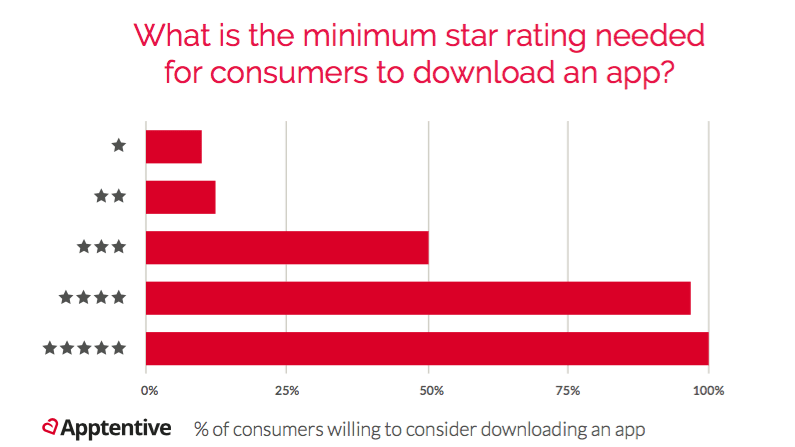
Why Ratings and Reviews Matter
Jumping from two-stars to three-stars in the app stores can increase conversion by up to 306 percent. Jumping from three-stars to four-stars still has a dramatic impact, increasing conversion by up to 92 percent.
Most telling, ninety percent of consumers consider star ratings to be an essential part of their evaluation of a new app. Seventy-nine percent of consumers check ratings and reviews before downloading an app, fifty-three percent check ratings and reviews before updating an app, and 55 percent check ratings and reviews before making an in-app transaction. These pieces carry so much influence that it’s now more important than ever for app publishers to make them a priority.
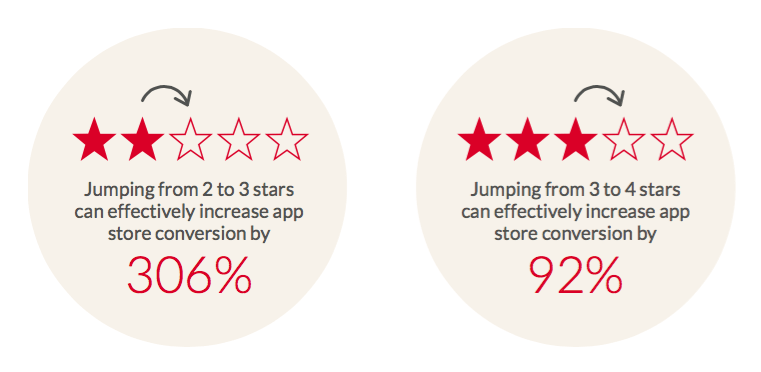
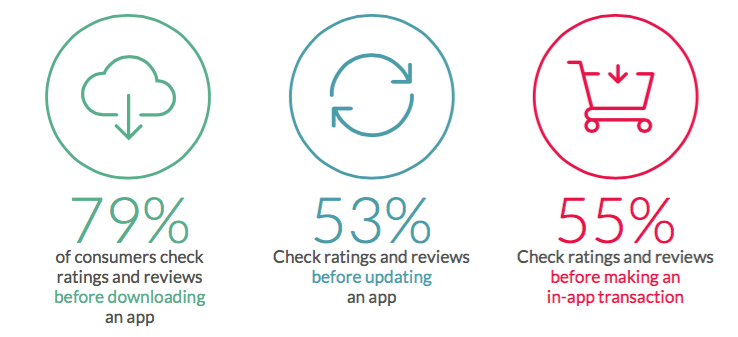
Star ratings are very influential in conversion and brand reputation. The opportunity cost of a star and the resultant gain from it can be huge in terms of brand loyalty and revenue.
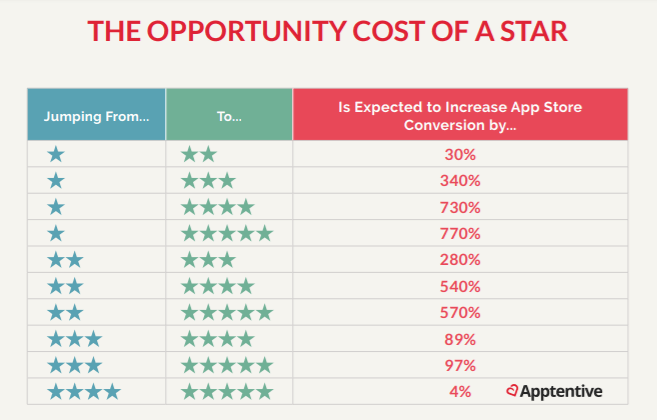
Why Your App Doesn’t Have Five Stars
Before you can take control over your ratings, it’s important to understand the reasons why they’re currently a little underwhelming. Only then can you make the inherent biases in app store ratings work for you rather than against you. A poorly rated app is not necessarily a bad app. Nor is an app with exceptional reviews necessarily a good app. When it comes to assessing quality and experience, app store ratings and reviews are, simply, not the best indicators. The reason your app doesn’t have five stars can largely be attributed to basic statistics. When we consider a rating scale, we’re psychologically predisposed to assume a normal distribution. That is, we expect the majority of people to give an ‘average’ rating in the middle of the scale (three stars) and a tapering minority to give an ‘extreme’ rating (one or five stars). Visually, we’d expect our ratings distribution to take the shape of a bell curve.
The problem here is what we like to call the “silent majority.” Essentially, the majority of your consumers never voice their opinion, write a review, or rate your app. Only one percent of the highly engaged or vocal people will raise their hand and volunteer feedback on their own. As a result, you end up only hearing from the extreme ends of this bell curve or the “vocal minority.” They’re the ones giving you one-start and five-star ratings.
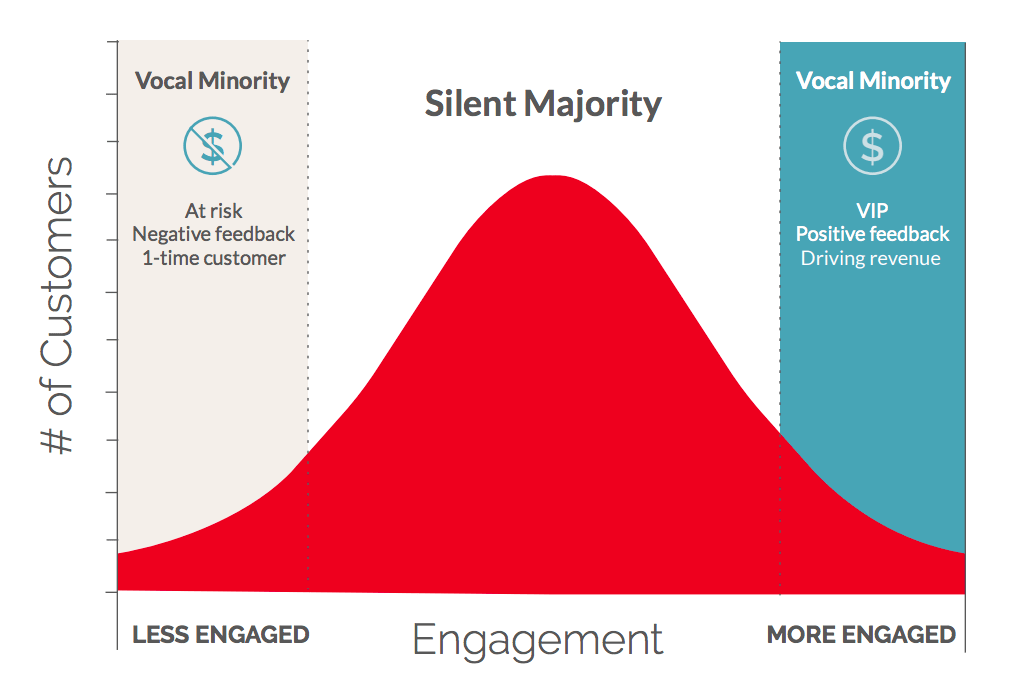
The truth is, apps are held to a very high standard. We expect them to work perfectly and have little motivation to review an app that simply meets our expectations, no matter how high those may be. It is only when apps fall short of our expectations that we put them under scrutiny.
How to Improve App Ratings and Reviews
Ultimately, you need to proactively ask for feedback in order to activate the silent majority rather than wait for feedback from the one percent of at-risk and VIP customers who come to you.
If you’re not proactively asking for feedback, you’re leaving an opportunity on the table to keep your finger on the pulse of your app customers, improve customer happiness, and boost your bottom line. There is endless untapped potential in prioritizing customer feedback from your silent majority, but you must be strategic in your approach to collect it.
To get better app ratings, we have to put positive customer experiences under the same scrutiny as we would negative experiences. We have to bring the user interface, mechanics, and other background elements to the surface and proactively nudge people to consider their customer experience. At Alchemer Mobile (formerly Apptentive), we’ve found the best way to do this is by asking a simple stop question: Do you love this app?
However, we like to encourage our customers to think about ratings and reviews in a more holistic way. It’s not just about what the customer is thinking at the moment when prompted for a rating and review. It is part of a bigger picture and the culmination of the customer’s larger journey with you as a brand. If a customer has been asked for feedback at the right time and place and then is also shown that the feedback was taken into account and incorporated into the app, you can rest assured that it is going to translate into stellar ratings and reviews.




